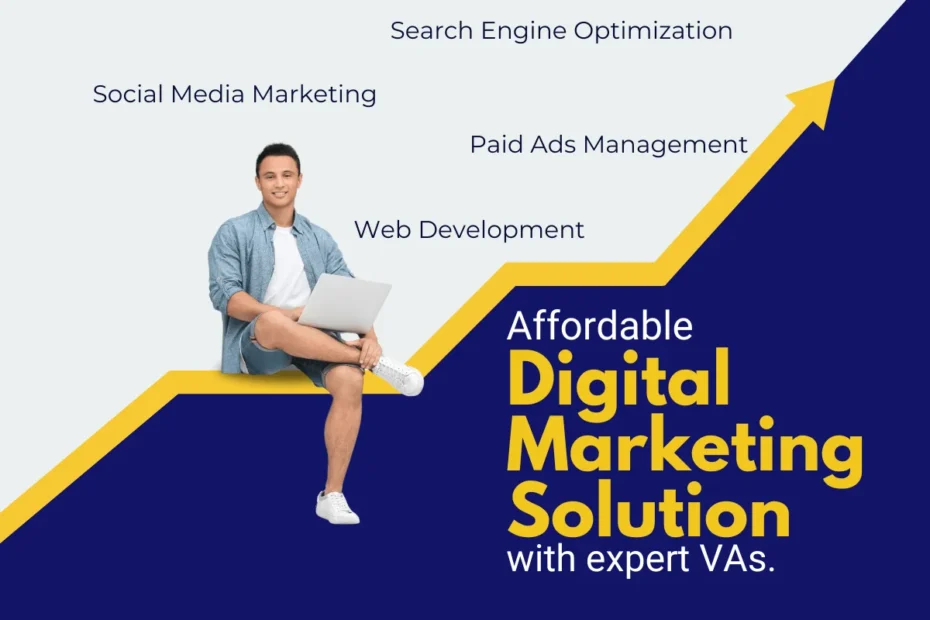Digital marketing works by using online channels like search engines, social media, email, and websites to connect businesses with their target audience. It involves attracting attention through content, making your brand visible through SEO and paid ads, and encouraging action through calls-to-action, landing pages, and emails. Every part is measurable, so you know what’s working and what needs improving.
Whether it’s showing up on Google when someone searches, running targeted ads on Facebook, or sending a welcome email when someone signs up, digital marketing guides users through every stage from awareness to purchase.
In this guide, we’ll break down each channel and show how they work together to drive real results.
1. What Is Digital Marketing?
Digital marketing is the use of the internet and digital technologies to promote products, services, or brands. This includes everything from search engines and email to social media and websites. In simple terms, it’s about meeting your audience where they spend their time: online.
Digital marketing strategies aim to:
- Attract new visitors
- Convert them into leads or customers
- Retain them through consistent value and engagement
It includes both organic (free) and paid methods to achieve these goals.
2. Key Channels of Digital Marketing
Let’s go through the most essential digital marketing channels and what each one does:
Search Engine Optimisation (SEO)
SEO improves your website’s visibility on Google and other search engines. It involves:
- Optimising web pages with relevant keywords (e.g. “digital marketing strategy”)
- Creating quality content that answers user questions
- Improving technical aspects like page speed and mobile usability
Good SEO helps your business rank higher, which means more free (organic) traffic.
Content Marketing
Content marketing focuses on creating valuable content to attract and educate your audience. This includes:
- Blog posts
- Videos
- Infographics
- Ebooks
The content must be relevant, informative, and consistent. It builds trust, answers common questions, and helps position your brand as an expert.
Social Media Marketing
Using platforms like Facebook, Instagram, LinkedIn, and TikTok, businesses connect with users, share updates, and run targeted ads. Social media can:
- Increase brand awareness
- Drive traffic to your website
- Build a community around your product or service
Paid campaigns allow you to reach specific demographics with tailored messages.
Email Marketing
Email is still one of the highest-ROI digital marketing channels. It allows you to:
- Nurture leads with educational content
- Promote offers or products
- Send personalised messages
List segmentation and automation tools make email campaigns efficient and scalable.
Pay-Per-Click Advertising (PPC)
PPC, like Google Ads or Meta Ads, places your content at the top of search results or social feeds. You only pay when someone clicks your ad.
PPC is powerful for quick visibility and works well for:
- Product launches
- Seasonal promotions
- Retargeting previous visitors
3. How It All Works Together
Digital marketing isn’t about using one channel but it’s about combining them effectively.
Here’s how a typical user journey might look:
- A user searches “best coffee machine for home” on Google.
- They find and click on a blog comparing coffee machines (thanks to good SEO).
- They read the post and see a call-to-action to download a “Coffee Machine Buying Guide” (content marketing).
- They enter their email to download it (email marketing begins).
- They later see your brand on Instagram and click through to your site again (social media).
- Finally, they see a retargeting ad offering 10% off and make a purchase (PPC).
Each stage works together to move someone from awareness to purchase.
4. Tracking and Analytics
One of the biggest advantages of digital marketing is the ability to track everything. You can measure:
- Website traffic
- Click-through rates
- Conversion rates
- Time on site
- Email open rates
Tools like Google Analytics, Meta Ads Manager, and email platforms offer clear insights. You can test campaigns, adjust based on performance, and optimise for better results.
5. Conversion: The Ultimate Goal
Getting traffic is good. But what matters more is conversion.
Conversion happens when a visitor takes the desired action:
- Buys a product
- Fills out a form
- Signs up for a newsletter
That’s why landing pages, calls-to-action, and user experience are crucial. Digital marketing’s power lies in combining awareness with persuasion by turning interest into action.
Real-World Example: A Local Gym
A small gym in Birmingham used the following digital marketing approach:
- SEO: Wrote blog posts targeting “home workout tips” and “beginner gym routine UK.”
- Content: Created videos on stretching and nutrition, shared on YouTube and Instagram.
- Social: Ran a Facebook campaign targeting locals aged 25–40.
- Email: Offered a free 7-day trial in exchange for email signup.
- Results: Increased monthly memberships by 38% within 3 months.
Final Thoughts
Digital marketing isn’t a single tool but a strategic approach combining multiple channels. It’s flexible, scalable, and measurable. Most importantly, it puts your brand in front of the people who are actively searching, scrolling, and clicking online.
Even with a limited budget, smart digital marketing can outperform traditional advertising by focusing on relevance, timing, and value.
